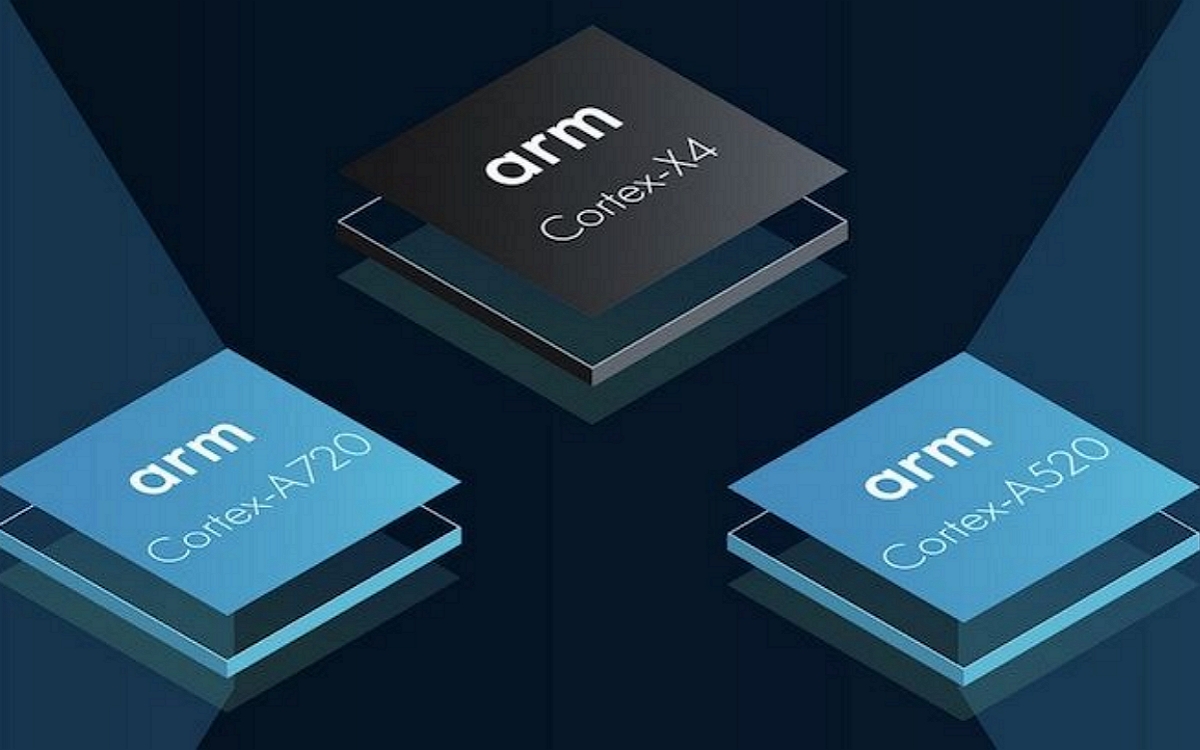ARM, the leading company in semiconductor intellectual property, has made a bold move by introducing its first line of processor cores exclusively designed for 64-bit technology, which will arrive in upcoming processors for Android smartphones as soon as the end of the year.
That’s it, we know what to expect in terms of performance for the next chips for Android smartphones that will arrive at the end of the year. ARM has just presented its new architecture ARMV9.2. Among the new cores are the Cortex-X4, a “performance” core for high-end smartphone chips.
The latter offers 15% increased performance while consuming 40% less power compared to its predecessor. This results in faster app launches, a more responsive interface, and potentially improved battery life for gaming and other resource-intensive tasks.
The ARM architecture is more efficient than ever
In addition to improving the power efficiency of the top-performing core, the Cortex-A720, which succeeds the midrange A715 core, is also focused on longevity and power efficiency. ARM claims the A720 is 20% more power efficient than last year’s model, and gives no indication of the performance gain. This generation will therefore be really dedicated to improving the autonomy of our devices with a lower power increase than in previous years.

Finally, let’s mention the Cortex-A520 efficiency core, designed for low-demanding tasks, which would be 22% more efficient than its predecessor, while delivering 8% better performance. This means that even light users can expect reduced battery consumption.
What will be the next chips to use these cores?
ARM didn’t reveal the names of its customers, but given that the majority of the mobile industry is based on the ARM architecture, it’s likely that companies like Qualcomm and MediaTek will use the new Cortex cores as the basis for their future. system-on-chip models. However, it is not uncertain whether Apple will adopt these new ARM cores, as the company has not yet upgraded to the newer ARMV9 architecture.

Among the processors that will use this new architecture, we can cite the Snapdragon 8 Gen 3 from Qualcomm, the Dimensity 9300 from MediaTek or the Exynos 2400 from Samsung, which will be found in the Galaxy S24 next year. All will be entitled to different core configurations. Qualcomm and MediaTek should start the ball rolling in November by using their chips in Chinese smartphones.
The most recent rumors suggest that the Dimensity 9300 will use 4 Cortex-X4 cores and four Cortex-A720 cores, while Snapdragon 8 Gen 3 will bet on a more balanced configuration with 1 Cortex-X4 core, 4 Cortex-A720 cores and 3 Cortex-A520 cores. The Exynos 2400 would be the only one to use 9 cores instead of 8, but we know that the three will be engraved in 4 nm. It will be necessary to wait until 2024 for Android smartphones to align with Apple by adopting a finer engraving of 3 nm.

ARM doesn’t neglect graphics performance either. The company launches the Immortalis-G720, Mali-G720 and Mali-G620 GPUs, which offer better performance while reducing power consumption. These GPUs introduce technologies that use less bandwidth, allowing for more complex scenes and HDR images. The Immortalis-G720, in particular, offers a performance gain of 15% compared to its predecessor, while being 15% more efficient.
The arrival of new ARM cores and GPUs should significantly improve smartphone performance, especially in terms of gaming. By unveiling the Mali-G720 and Mali-G620 GPUs, ARM is also addressing a broader market, bringing high-end GPU capabilities and features to more affordable flagship phones.
